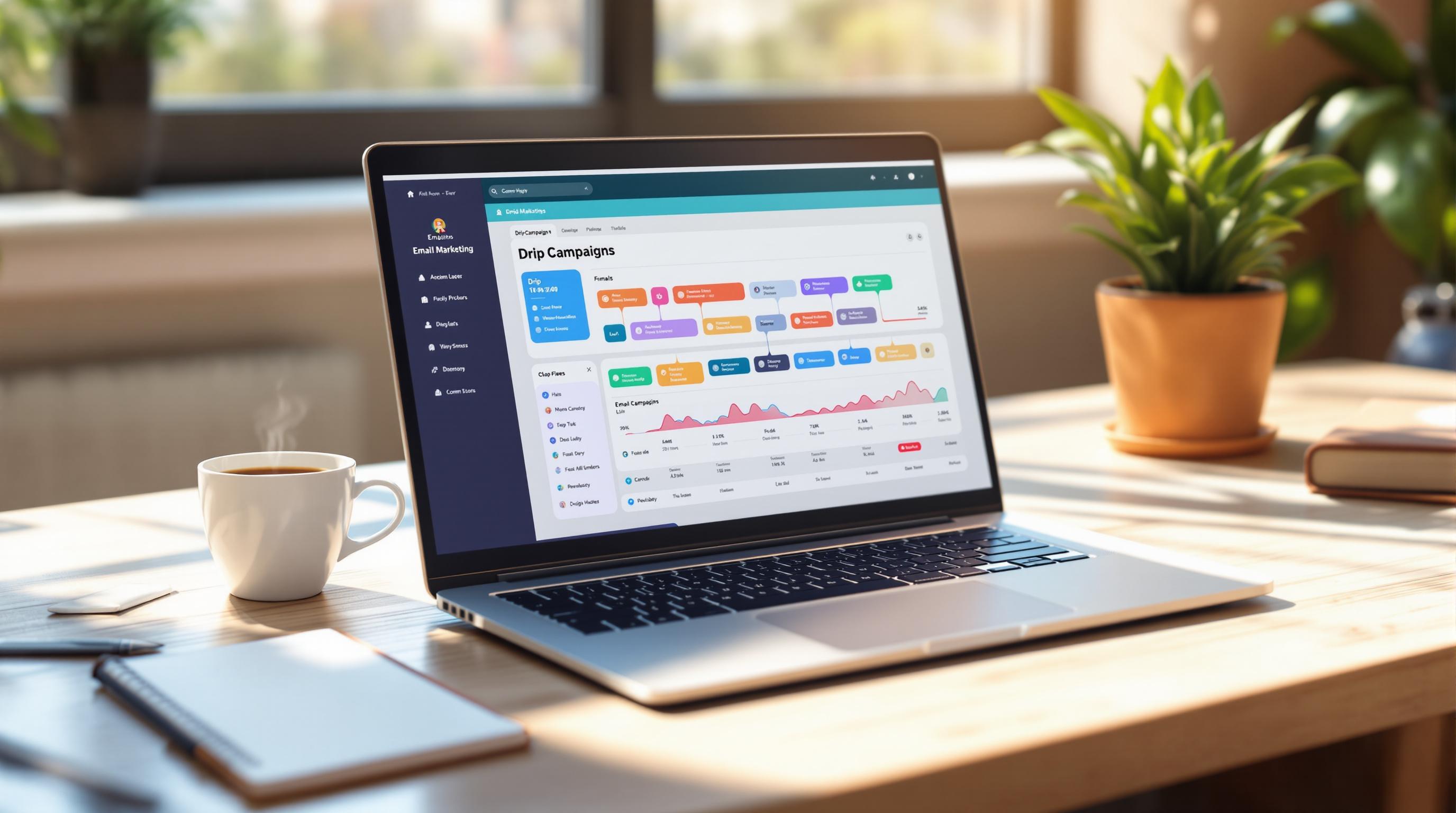Want more installs for your Chrome extension? Paid ads can help. Extensions using paid ads see 127% more installs than those relying only on organic growth. Here's what you need to know:
- Best Platforms: Use Google Ads for search intent, Facebook Ads for wide appeal, and LinkedIn Ads for B2B targeting.
- Budget Tip: Allocate 30-40% of your marketing budget to paid ads for balanced growth.
- Preparation: Optimize your Chrome Web Store listing and landing pages - polished assets boost conversions by 22%.
- Key Strategies: Focus on high-intent keywords, retargeting campaigns, and A/B testing to refine your ads.
- Metrics to Track: Aim for a 2-5% CTR, $0.50-$2.00 CPC, and 3:1 ROAS for success.
This guide simplifies how to plan, execute, and optimize paid ad campaigns for your Chrome extension. Let’s dive in!
Preparing Your Extension for Advertising
Before launching ads, make sure your Chrome extension's store listing and landing page are ready to go. Extensions with polished assets see a 22% boost in conversion rates. While earlier we touched on CTR benchmarks, this section is all about turning clicks into installs with smart preparation.
Optimizing Your Chrome Web Store Listing

Your Chrome Web Store listing is where potential users decide to install your extension - or not. Think of it as your digital storefront. As John Mueller noted during Google's Chrome Dev Summit 2022:
"A well-optimized Chrome Web Store listing can be the difference between a user installing your extension or moving on to the next option. It's your digital storefront, so make it count."
Here are some key elements to focus on:
| Element | Specification | Why It Matters |
|---|---|---|
| Title | Up to 60 characters | Impacts search rankings |
| Description | 132 characters | Influences click-through rates |
| Screenshots | 1280x800 pixels | Boosts installs by 23% |
| Icon | 128x128 pixels | Enhances brand recognition |
For example, a productivity extension increased installs by 35% after adding comparison screenshots that highlighted its features. Visuals matter - don't overlook them.
Designing a Landing Page for Ads
Chrome extension landing pages typically convert at 2.9% (Unbounce 2021). To improve those odds, include these elements:
| Component | Purpose | Best Practice |
|---|---|---|
| Value Proposition | Communicate benefits | Place above the fold, use clear language |
| Social Proof | Build trust | Add user reviews or download stats |
| Visual Demo | Highlight features | Use a short video or screenshots |
| CTA Button | Drive action | Use bold colors and action words |
For instance, security extensions should mention encryption features briefly but clearly. Momentum, a popular extension, sets a great example by maintaining consistent branding across its store listing and landing page. This approach not only builds trust but also encourages installs.
With these basics covered, the next section will dive into specific strategies for advertising on platforms like Google Ads and social media.
Strategies for Paid Advertising of Extensions
Promoting extensions through Google Ads, social media platforms, and retargeting campaigns can effectively reach your target audience. Let’s break down some key strategies that deliver results.
Using Google Ads for Extensions
Google Ads is a powerful way to connect with users actively searching for solutions. Use your optimized Chrome Web Store listing (as discussed earlier) as the landing page for your ads.
| Campaign Type | Best Use Case | Typical Results |
|---|---|---|
| Search Ads | High-intent users, direct response | 2-5% CTR |
| Display Ads | Visual showcase, brand awareness | 0.5-1% CTR |
| YouTube Ads | Product demos, feature highlights | 1-3% view-through rate |
Focus on intent-driven keywords when setting up campaigns. These keywords ensure you're targeting users who are most likely to engage, creating a solid base for expanding into other platforms like social media.
Social Media Advertising for Extensions
Social media platforms allow you to visually demonstrate your extension's features to different audience segments. Each platform has its strengths, so tailor your approach accordingly.
For B2B extensions, LinkedIn is particularly effective. For example, AI-powered tools targeting sales professionals can highlight pain points like lead generation, while showcasing automation and export features. These ads not only raise awareness but also set the stage for retargeting campaigns that drive conversions.
Retargeting Campaigns for Extensions
Retargeting is all about converting visitors who showed interest but didn’t install your extension. By segmenting your audience based on their engagement, you can deliver personalized messages that resonate.
| Stage | Focus | Timing |
|---|---|---|
| Landing Page Visitors | Highlight features | 1-3 days after visit |
| Partial Installation | Emphasize benefits | 24-48 hours after attempt |
| Abandoned Premium | Offer incentives | 3-7 days after abandonment |
To avoid overwhelming your audience, use frequency capping to limit how often ads are shown. This keeps your messaging effective without causing ad fatigue.
Evaluating and Enhancing Ad Performance
To improve ad campaigns, focus on three main areas: tracking key metrics, running systematic tests, and using analytics tools effectively.
Key Metrics for Ad Campaigns
Tracking the right metrics helps gauge your campaign's success. Here's a quick breakdown:
| Metric | Target Range | Why It Matters |
|---|---|---|
| Click-Through Rate (CTR) | 2-5% | Shows how appealing and relevant your ad is. |
| Cost Per Click (CPC) | $0.50-$2.00 | Helps manage budget efficiency. |
| Conversion Rate | 2-5% | Tracks how well your ad drives installs or actions. |
| Cost Per Acquisition (CPA) | Under $5-$10 | Measures how cost-effective your campaign is. |
| Return on Ad Spend (ROAS) | 3:1 minimum | Reflects overall campaign performance. |
| 30-Day Retention | 40-60% | Indicates user retention and ad targeting quality. (This aligns with the 22% conversion boost seen with better-designed assets.) |
Once you have these metrics in place, start experimenting with A/B testing to refine your campaigns.
A/B Testing for Ad Optimization
A/B testing allows you to tweak specific ad elements and see what works best. Here are some areas to test:
| Test Element | What to Test | Potential Impact |
|---|---|---|
| Headlines | Compare value-driven vs. feature-focused messaging. | Boost CTR by 15-25%. |
| Ad Visuals | Test product images vs. benefit-oriented visuals. | Increase engagement by 10-20%. |
| Call-to-Action | Experiment with action verbs or urgency-based phrases. | Improve conversions by 5-15%. |
Run your tests for 7-14 days and aim for at least 500 impressions per variant to get reliable results.
Analytics Tools for Better Insights
The right tools can provide deeper insights into your campaign performance. Here’s a toolkit to consider:
1. Core Tracking: Use Google Analytics to measure website traffic and sync it with ad platforms for unified reporting.
2. Behavior Analysis: Tools like Mixpanel or Amplitude can track user actions from clicking your ad to engaging with your extension.
3. Landing Page Insights: Hotjar’s heatmaps and session recordings help you understand how users interact with your landing pages based on their traffic source.
"The combination of Google Analytics for website tracking, Google Ads for ad performance, and Mixpanel or Amplitude for in-extension behavior tracking often provides a comprehensive analytics setup."
sbb-itb-8abf799
Email Extractor Tool - Extract Emails with Ai Automation

For lead generation-focused extensions, tools like Email Extractor Tool - Extract Emails with Ai Automation can help improve the effectiveness of your paid ad campaigns.
How Email Extractor Tool Supports Lead Generation
This tool streamlines lead capture by automatically gathering emails from landing pages and websites visited by users who click on your ads. It bridges the gap between paid traffic and lead generation, making your campaigns more efficient.
Here’s how it enhances your ad performance:
| Campaign Stage | Tool Application | Impact on Ad ROI |
|---|---|---|
| Initial Contact | Collects emails from landing page visitors | Supports 2-5% CTR goals for Google Ads |
| Retargeting | Builds retargeting lists using collected emails | Improves audience targeting precision |
| Follow-up | Automates email nurturing sequences | Increases conversion rates from 2% to 7% |
Key Features:
- Instant Email Detection: Automatically identifies valid emails as users interact with your landing pages.
- Easy Integration: Compatible with major platforms like Google Ads and Facebook Ads.
- Data Export Options: Download email lists in CSV or TXT formats for use in email marketing tools.
Pricing Plans for Email Extractor Tool
The tool offers flexible pricing based on your campaign size:
| Plan | Monthly Price | Email Extraction Limit | Best For |
|---|---|---|---|
| Starter | $8.99 | 5,000 emails | Small businesses testing ad campaigns. |
| Growth | $37.99 | 50,000 emails | Businesses running active campaigns. |
| Enterprise | $139.99 | 1,000,000 emails | Large-scale ad operations. |
The Growth plan is the most popular choice, offering a good balance for scaling campaigns. These pricing tiers align with the recommended practice of allocating 30-40% of your marketing budget to paid advertising.
Conclusion: Key Points for Paid Ads Success
Summary of Key Strategies
Running paid ads for Chrome extensions requires a well-thought-out plan supported by data. Achieving results means using tested methods while consistently tracking performance and refining your approach.
| Campaign Element | Key Focus Areas | Expected Impact |
|---|---|---|
| Platform Strategy | Google Ads + Social Media integration | 20-35% increase in reach |
| Creative Testing | A/B testing of ad elements | 15-25% boost in conversion rates |
| Analytics Setup | Conversion tracking + user behavior | Informed decisions for optimization |
"The key to successful paid advertising for Chrome extensions lies in understanding your target audience and crafting compelling ad creatives that highlight your extension's unique value proposition." - Sarah Johnson, Head of Growth Marketing at Extension.io, Chrome Dev Summit 2023
These strategies build on the earlier platform-specific advice, emphasizing the importance of measurable results.
Next Steps for Marketers
Marketers can take action by focusing on these three priorities:
- Set up cross-platform tracking to monitor installs and user engagement.
- Begin with a controlled budget across different platforms to find the most effective channels for your extension.
- Use custom intent audiences and retargeting campaigns to connect with users searching for solutions your extension offers.
For extensions targeting leads, pair these steps with the email automation techniques mentioned earlier to get the most out of your campaigns.
FAQs
Where can I advertise Chrome extensions?
When it comes to promoting Chrome extensions, the right advertising platforms can make all the difference. Here are some of the top options:
| Platform | Key Benefits | Best For |
|---|---|---|
| Google Ads | Targets users with specific search intent, integrates with the Chrome Web Store | Extensions addressing search-related needs |
| Social Media | Offers demographic targeting and visually engaging formats | Consumer-friendly extensions with wide appeal |
| Tech Ad Networks | Places ads in relevant tech environments for better context | Tools for developers and productivity-focused extensions |
These suggestions align with earlier budget guidelines, where around 30-40% of your marketing budget should go toward paid ads.
Choose your platform based on your extension's purpose and audience. For instance, B2B extensions thrive on LinkedIn, where ads can emphasize workflow improvements or enterprise features. A lead-generation tool like "Email Extractor Tool" might highlight its security features in LinkedIn campaigns.
Social media platforms are perfect for showcasing your extension in action with eye-catching visuals. Meanwhile, tech ad networks like Buysellads or Carbon Ads are great for targeting developers and tech enthusiasts.



